Souvenir Seagull Wings
From the collection of Museon (Museum of Science and Culture), The Hague
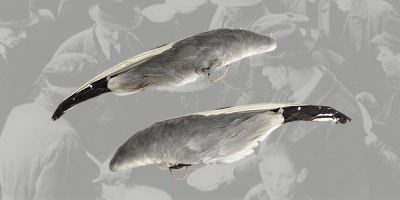
h 8 cm x w 32 cm
1945
The winter of 1944-1945, which was at first very rainy and then unbearably cold, led to one of the worst disasters in Dutch history. Famine threatened the lives of 3.6 million people, especially in the big cities in the west of the country.
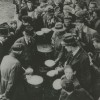
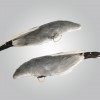
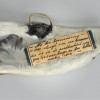
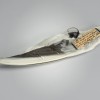
After the Dutch railway complied with the exiled-Dutch government’s appeal for a strike in September 1944 – to advance the Allied effort to liberate the rest of the Netherlands – the German occupier retaliated with a food blockade. Due to the shortages, people stood in line for hours on end waiting for something to eat from a central soup kitchen. City dwellers made long trips to the countryside in hopes of finding something to eat. People ate sugar beets, tulip bulbs and their pets to survive. And sometimes even a seagull. There are several stories of people who tried to catch a seagull, for instance with a rat trap, and then ate it. Hardly a success –seagulls apparently have a stinky oily taste. An unknown bird-eater held on to this pair of wings as a reminder of that horrendous winter. The Hongerwinter (Winter of Starvation) took at least 22,000 lives.




